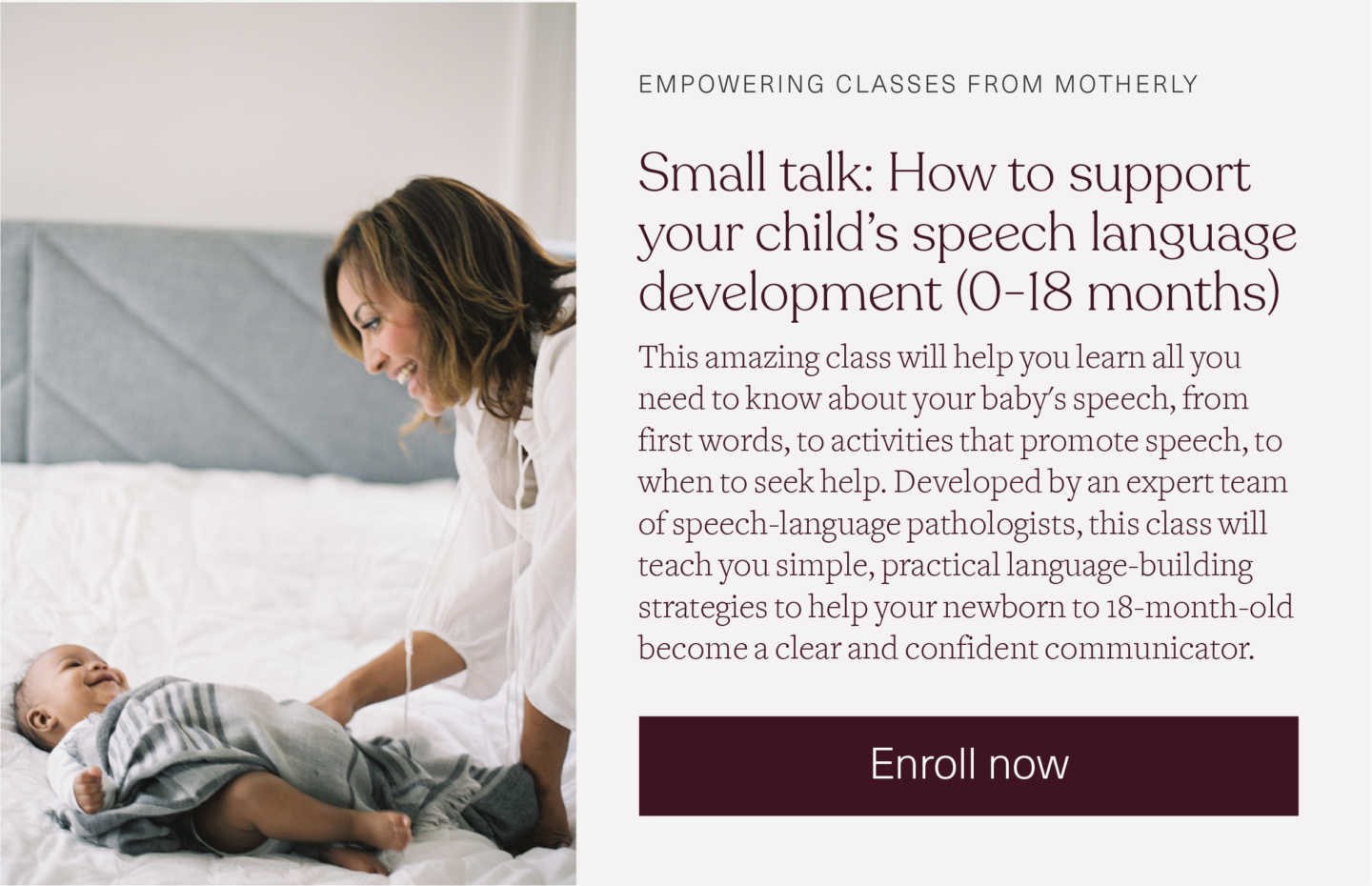5 everyday opportunities to teach your toddler to talk
If you’re struggling to find structured time to teach your little one to communicate–and eventually say their magical first words—the good news is that you don’t have to abide by any rigid schedule.

Monkey Business Images/Shutterstock

The idea of setting aside time to work on your toddler’s communication skills may feel stressful. Your days are usually packed, and you already have a lot to manage.
If you’re struggling to find structured time to teach your little one to communicate–and eventually say their magical first words—the good news is that you don’t have to abide by any rigid schedule. In fact, you can weave practice into your everyday activities.
Related: It’s science: How we talk to babies has a dramatic effect on their future vocabulary
Research shows that the more often parents meaningfully interact with their kids and practice foundational speech and language skills (even informally), the more quickly they’ll reach developmental milestones.
The bottom line is that you don’t have to squeeze speech practice into your already full schedule. Practice can happen organically, in everyday exchanges with your child, during activities you’re already doing like eating a meal, playing at the park or riding in the car. You simply need to know how to purposefully interact with your child to create natural, language-building moments. Below are five points in the day where you can practice your toddler’s communication skills.

5 points in the day to help your toddler’s language development
1. During the morning routine
Any time is a good time for music—especially in the morning to jumpstart your day! Pausing during songs and encouraging your child to fill in the blanks helps increase expressive language. Try singing some fun songs during breakfast. For example, you could try: “I like to eat, eat, eat, apples and bananas,” but fill in the blank with the foods your child is actually eating. Pause after you sing, “I like to eat, eat, eat…” and see if your child will label their breakfast food for you.
When getting your child dressed for the day, offer them choices about what they’d like to wear. Providing choices is a powerful way to promote language development because it gives your child a taste of independence. Communicating what they want, and then receiving that item, creates a reward structure that can encourage them to speak more. Try presenting two shirts. You can say, “Would you like the gray shirt? Or the red shirt?” Pause, wait, and see if your child responds. If they usually only point, then prompt them to imitate the name of their desired shirt color. If they typically only give you one word (like “red”), prompt them for a two-word phrase (like “red shirt.”) You want to work just one level above where your child currently is.
2. Driving in the car
Wherever you’re going, use this valuable time to your advantage. Here are some ways to help toddler language development while on the go:
- Model some non-speech sounds for your child to imitate. If you hear a horn or an engine, say, “Beep! Beep!” or “Vroom vroom!” Sometimes, early communicators are more likely to imitate non-speech sounds at first. This is a perfect stepping stone if your child isn’t yet using many words.
- Try targeting concepts like “stop” and “go.” When you stop the car, you can say, “Stop! The car stopped!” When it’s time to drive, say, “Go! Go car!” See if your child will imitate these phrases. Your child may even begin independently saying, “Go!” or “Stop!” over time.
- Continue to use music and nursery rhymes to promote language growth. The great thing about singing and talking in the car is that your child is buckled in–they can’t go anywhere, and you get their full attention.
Related: Listening to music with your kids boosts your bond—especially with teenagers
3. Shopping for groceries
There are lots of language opportunities at the supermarket. In the produce aisles, make it a point to talk about the colors you see: red apples, green grapes. Not only will your child be learning their colors, but they may begin to use these words in their everyday speech.
As you find each item on your list, have your child label the item or use it in a phrase. You can tell your child, “I need your help! What is this?” and point to the item on the shelf. Once they give you a verbalization, give them a high five and put the item in the cart. By feeling like they’re helping you shop, they may be more motivated to communicate.
4. Playing outside
Being outdoors offers fresh air, exercise and a wealth of language opportunities, too. Here are a few ways to encourage your toddler to speak when playing outdoors:
- Swinging is the perfect activity to target verbalizations. As you push your child on the swing, grab the swing and wait. See if your child requests, “More!” or “Go!” before you reward them with a push. For added cueing, you could model, “Ready, set, ….” and see if your child fills in the blank with “Go!”
- Target fun animal sounds while playing outside. Again, practicing non-speech sounds may be easier for children than producing real words. If you see a dog on a walk, ask your child, “What does the dog say?”
- Continue to offer your child choices: “Do you want to play on the swing, or go on the slide?” This is a natural context for your child to communicate, and one that’s very rewarding.
Related: Getting kids to play outdoors is one of the best things you can do for them
5. Winding down for bedtime
While the day may be coming to a close, that doesn’t mean practice has to end. There are many ways to promote language growth during your child’s nighttime routine.
- Bathtime is an opportunity to target speech and language skills. You can teach words like “On” and “Off” with the faucet. You can even target concepts like “Wet” and “Dry” and “In” and “Out.”
- Be sure to read a book with your child before bed. Reading allows your child to hear new vocabulary and learn correct sentence structure. Ask your child to point to different items in the pictures, or name them. For children who are already using some phrases, you can ask a question like, “What do you see in the picture?”
You know your child best. Think about what communication skills will benefit your child most, and how you can naturally weave them into their everyday routine. It isn’t hard–it just takes some creativity. Your little one will be talking in no time.
This story is a part of The Motherly Collective contributor network where we showcase the stories, experiences and advice from brands, writers and experts who want to share their perspective with our community. We believe that there is no single story of motherhood, and that every mother's journey is unique. By amplifying each mother's experience and offering expert-driven content, we can support, inform and inspire each other on this incredible journey. If you're interested in contributing to The Motherly Collective please click here.